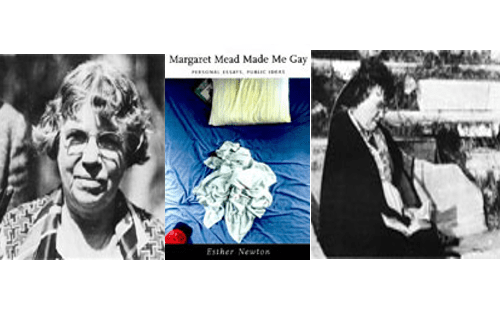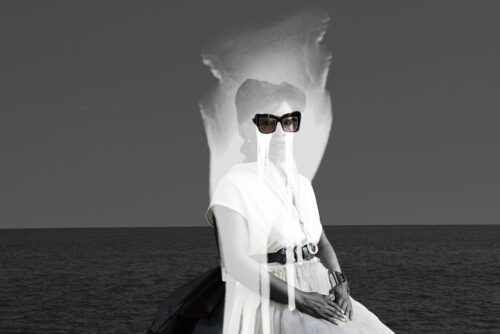Well, it is a great pleasure to welcome all of you to this day that we will spend in the company of Margaret Mead, Barnard Class of 1923. The College’s Department of Anthropology and Center for Research on Women have worked together to assemble an excellent group of panelists, including friends I haven’t seen for many, too many, years.
So let us begin by thanking those who have made this day possible. Now we’re also indebted to the alumnae of Barnard College for establishing the Gildersleeve Professorship, which has brought us our special guest, Mary Catherine Bateson, distinguished author, anthropologist, and daughter of Margaret Mead and Gregory Bateson. The visiting professorship is named for Dean Virginia Gildersleeve, who led Barnard College from 1911 until 1948. Gildersleeve was the only woman appointed by Franklin Delano Roosevelt to the Commission to Establish the United Nations Charter at the conclusion of World War II. She also played an important role in bringing women into the military, and getting them into the professional schools at Columbia University. At one point she made a deal with the medical school dean that, if he admitted a Barnard woman, that woman would graduate first in the class – and that is just what happened.
So, since one indomitable and controversial woman deserves another, we move from Virginia Gildersleeve to Margaret Mead.
In the spring of 1967, when I was about to leave for a year of ethnographic field work in the tropical forest of Northern Brazil, I went to see Margaret Mead in her office at the American Museum of Natural History – a spacious center of anthropological operations, filled with the results of years of work in Polynesia, Melanesia, Southeast Asia and all the other places and projects she had, in her boundless energy, taken on. I was a doctoral student in anthropology at Columbia University at the time, and was about to embark on a year of dissertation research. As part of my graduate work I had taken a course in field methods with Mead. I wanted to speak with her more specifically about some of the mechanics of field work, but, to be frank, the visit was also something in the nature of a pilgrimage. What I remember most clearly about that meeting in the museum is that at one point she looked intensely into my eyes, shook her finger at me. Now she actually had a habit of doing this, and as a result one middle-aged member of the Columbia Anthropology Department used to say that he loved talking with Margaret, because it made him feel about 40 years younger. I should add that the reason a certain number of male anthropologists have trouble with Margaret Mead, I think, is that she aroused in them what we might call “the primal fear of the mother.”
In any event, she shook her finger at me and she said, “Now Judith, you must type up your field notes every night, so that if you die suddenly someone else can use them.”
Now as it happens, I was going straight from this meeting with Mead to deal with dinner with my parents, who were already in an altered state of consciousness about my doing field work in the jungles of Brazil. They were very excited that I had seen Margaret Mead, and I did them the favor of not sharing with them that particular bit of advice.
Margaret Mead was extraordinary in her ability to break new ground, embark on strange adventures, and yet, at the same time, to remain so attuned to her own history and culture. That was the key to her effectiveness in sharing her anthropological ideas with a wide audience. She both reflected and influenced her times. For example, in the area of gender, you can compare Sex and Temperament, written in the 30s, with Male and Female, written in the ’50s. She was a true public intellectual. Not the New York Review of Books kind of public intellectual, but one who reached out to the Book-of-the-Month Club set and to the readers of women’s magazines, like Redbook. It was Margaret Mead, together with her friend and colleague Ruth Benedict, who more than anyone else brought culture to the masses; that is, led them to think of culture in the anthropological sense; as what we are born into by virtue of living in a society as opposed to something we acquire by going to museums and the opera. The cultural playing field was leveled, since culture is something we all have, not something some people have more of than others. Now that is a nice, democratic idea, and if anyone could make it as American as apple pie, that someone was Margaret Mead. And for this she was treated with condescension by the mandarins in her own profession. I believe it was Edmund Leach who characterized her Polynesian work as the “palm trees waving in the breeze school of ethnography.” But social/cultural anthropology has not seen her like again. When we retreated from the responsibility of popularizing our work, we abandoned the field largely to the biological reductionists, the socio-biologists, the evolutionary psychologists. They are the ones who have been influencing public opinion most strongly in the years since Mead left us. I should add that Mead has done her best to do her part even beyond her lifetime, since she was a major, other-worldly protagonist in a debate with Derek Freeman, who did not have the guts, or whatever other body parts, to take her on while she was still around.
Margaret Mead, once you were a young woman on this very campus, fiercely (and I’m sure fiercely is just the word) pursuing your intellectual interests. Many of us knew you as an elder, looking like an Old Testament prophet, staff and all. Your daughter is here with us today, and many other daughters as well, since you are a major node in the Barnard matrilineage. Also gathered here today in your honor are fellow members of the clan of anthropologists. (Do you remember when we all had to know the difference between clans and lineages?) We will be sifting your contributions and critically evaluating your legacy, but we will also be according you the ancestor worship that is your due. So Margaret, I hope you’re taking good notes.



